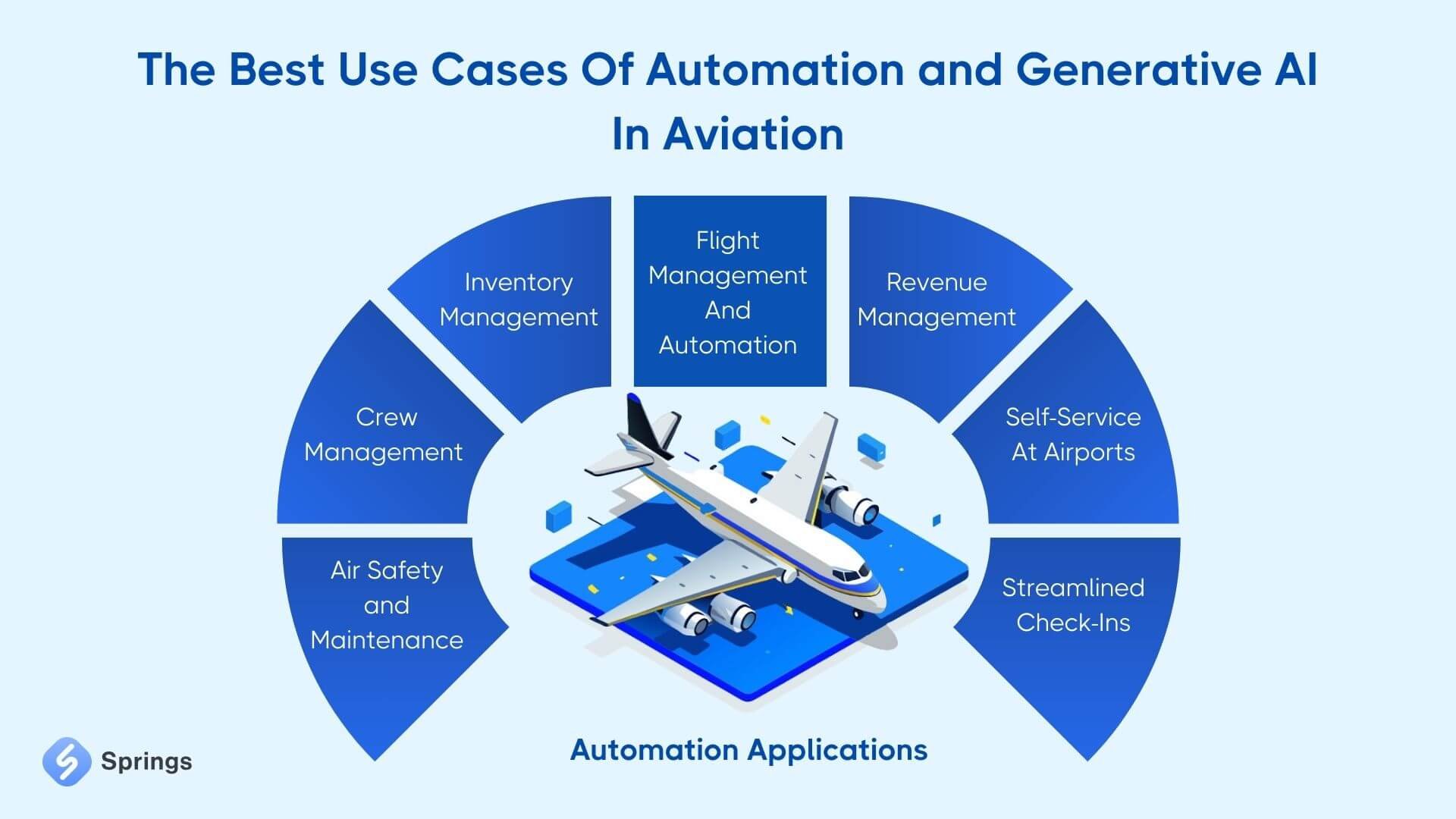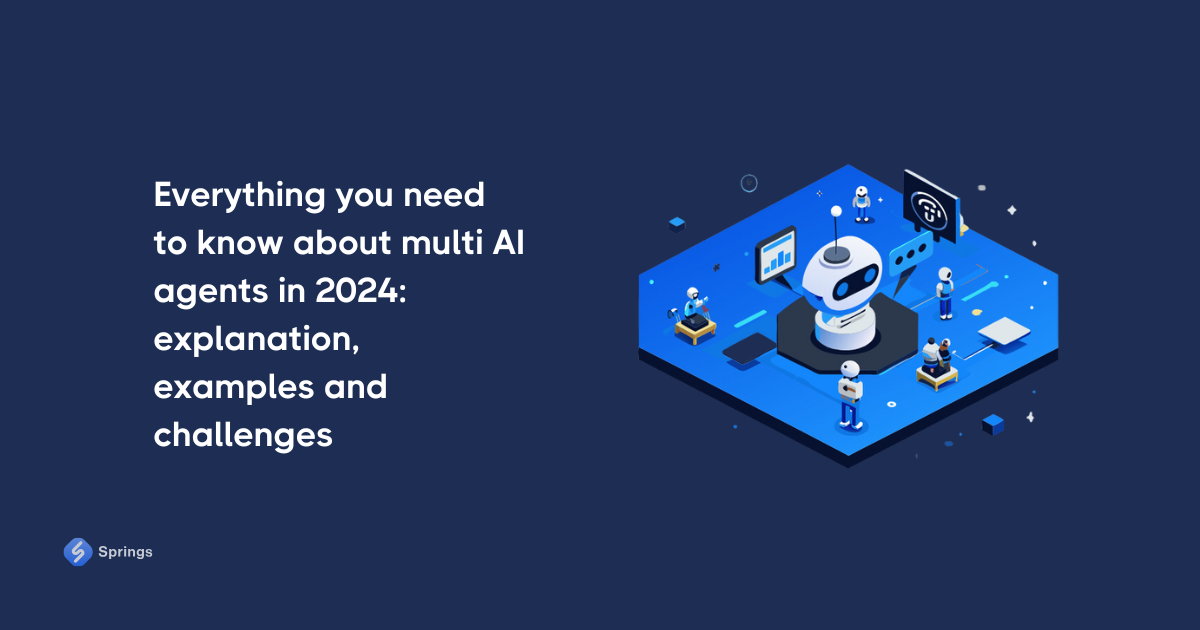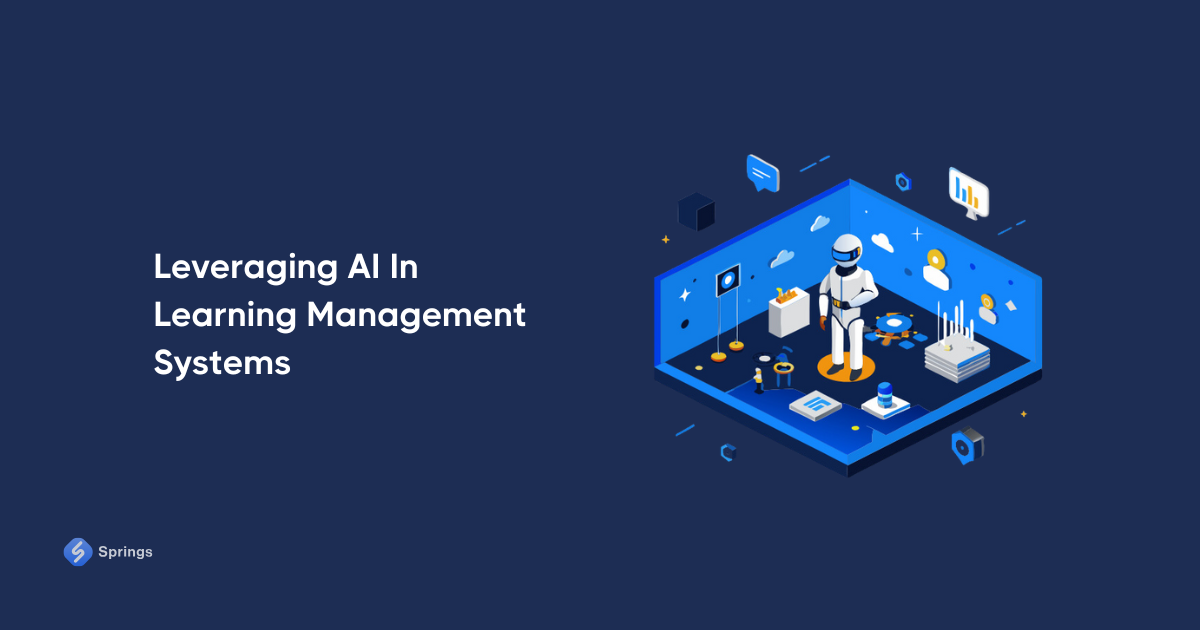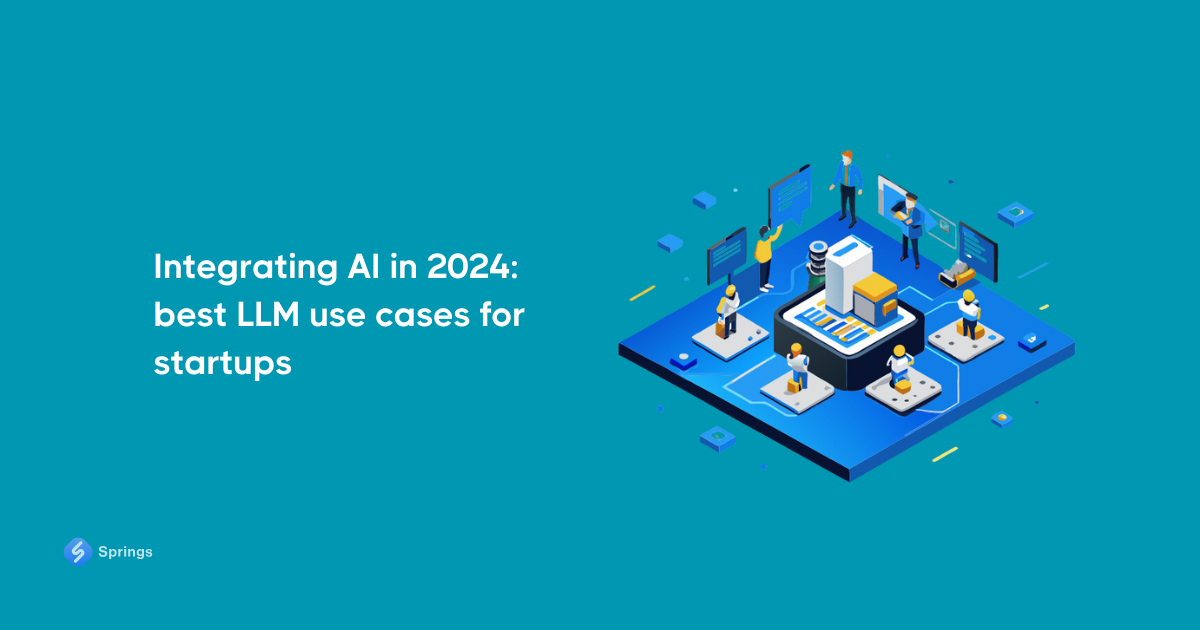How AI In Aviation Can Transform This Industry
A broad range of technologies, commonly referred to as artificial intelligence, revolutionizes industries across the world. From using computer vision in healthcare to making education more accessible, tools built with AI create new growth opportunities and lead to higher accuracy across different sectors.
AI technology has also found its way into the transportation industry. We’re not talking about using AI to build autonomous car navigation systems but it seems that AI and aviation are the newest hot topics among technology experts.
We have already discussed the possibilities of using Generative AI for airports and aviation chatbots. In this article, we will talk about the general significance of this new partnership, as well as its potential case studies.
The Importance Of AI Aviation Solutions
Aviation is one of the world's most costly and heavily regulated industries. Companies spend billions of dollars on designing, developing, and producing aircraft. These vehicles have to be made to the best industry standards. Introducing these tools to aviation has several potential benefits.
The International Air Transport Association has set a goal of reaching ambitious net-zero targets by 2050. Developing sophisticated AI aviation tools can help speed up this process and address the approximately 2% of the global energy-related CO2 emissions that aviation accounts for.
These solutions can help reach this goal thanks to several benefits.
Better Fuel Sustainability
Artificial intelligence solutions address the obstacles facing sustainable aviation fuel (SAF) development through production optimization. The aim is to cut air travel emissions down to nothing by making fuel from renewable resources, waste feedstocks, and organic materials. Theoretically, it provides a viable alternative to traditional fossil fuels.
Integration of AI in aviation allows researchers to analyze extensive datasets to pinpoint areas of improvement. This potentially reduces production costs and makes this technology more economically feasible. Using AI opens new opportunities for refining the conversion process and finding the best feedstocks.
Contrail Prediction and Prevention
According to an IPCC report, clouds made by airplane trails are responsible for about 35% of aviation’s global warming effect. Unlike regular CO2 emissions, contrails form due to particular temperatures and humidity. A minority of flights are responsible for the warming caused by contrails. AI tools better predict which flights will most likely form them.
Modern weather forecasts predict weather phenomena at low altitudes, but they aren’t adapted to work with the height of aircraft flights. Artificial intelligence airline products will hypothetically be able to predict their formation by offering a comprehensive analysis of flight altitude and weather data. Aircraft will be able to use this information to avoid contrail formation.
Enhanced Aircraft Design
AI/ML development in the aviation industry potentially makes aircraft more fuel-efficient and better designed. These tools analyze enormous amounts of information faster than any engineer. They have the potential to run more detailed simulations for optimized material selection, aerodynamics, and engine performance.
One of the world’s biggest airplane manufacturers, Boeing, uses ML and AI to improve these metrics. The use of artificial intelligence helps calculate fluid dynamics simulations that show how air flows over the aircraft’s structure. This tech minimizes drag, improves wing shape, and makes vehicles more fuel-efficient when applied correctly.
The Best Use Cases Of Automation and Generative AI In Aviation
Artificial intelligence is a relatively new technology for aviation and associated services. However, specialists have already found several applications for it in different areas of running flights, airports, and crews. Here are the top things they accomplish.
Automation Applications

Air Safety and Maintenance
The rise of artificial intelligence airlines will make flights safer and more manageable. Currently, unplanned maintenance accounts for almost 30% of the delay time. Prediction analysis made by these tools offers real-time insights. With its help, technicians inspect aircraft faster and more efficiently, spotting defects before they become problems.
At Springs, we have already had experience with building an Aviation MRO Platform created for improving aircraft maintenance around the world. We built a B2B marketplace streamlining potential transactions by connecting international airlines with premier companies specializing in maintenance, repair, and various operational services.
For example, if one of the bolts soon comes loose or the air filter system is about to malfunction, AI products based on computer vision technologies can provide alerts, reports, and notifications to technicians. Experts use their findings to address potential problems and replace parts that are about to break. This practice reduces maintenance costs and efforts while keeping passengers and crews safe.
Crew Management
AI's predictive analytics techniques provide possibilities for airlines to deploy and maintain their crews. Their analytical capabilities help organizations create better schedules based on qualifications, aircraft use, work time, and expenses. Streamlining this process lets airlines give their junior staff the required experience by pairing them with more experienced employees.
For example, big Boeing company Jeppesen uses an AI product called Crew Rostering to predict the risk of pilot fatigue. The company introduced its biometrical capabilities to flight crew scheduling software to find people on the verge of exhaustion. Such products can be paired with existing workforce management systems for even better results.
Flight Management And Automation
Even though these solutions are still mainly in the experimental stage, they can potentially revolutionize how airplanes take off and land. From 2020 to 2024, Airbus ran a series of tests for such a system that uses image recognition technology. The project was successful and showed the potential of enhanced flights.
Platforms such as Flyways use AI for better flight management and path optimization. These solutions use data from external sources and multiple onboard sensors to achieve this. This information helps dispatchers and pilots reduce delays due to turbulence, bad weather, and other harmful factors.
Inventory Management
Like in other industries, such as e-commerce and healthcare, AI in aviation helps all organizations better track their inventory levels. These solutions analyze maintenance schedules and usage patterns to ensure that aircraft manufacturers and airports have the necessary materials and tools.
The adoption of AI by airlines helps them maintain adequate stock levels of different items and reduce downtime. It allows them to properly calculate the necessary goods required for flights of different lengths. This approach helps carriers keep their stock in check and prepare for changes in passenger numbers.
Revenue Management
Generative AI significantly streamlines operations in this area by adjusting prices for specific markets. The technology helps find more efficient distribution channels and streamline seat management. This lets airlines remain competitive and better cater to customers.
Using the technology for revenue management helps airlines understand passenger behavior and tastes. With AI solutions, airlines have a better chance of finding out how much they are willing to spend on travel. Additionally, this technology aids in establishing the expected marginal seat revenue (EMSR) and optimizing ancillary prices.
Self-Service At Airports
Modern airlines and airports utilize end-to-end self-service solutions across multiple terminals. They are a step up from check-in kiosk systems introduced after the COVID-19 pandemic. Systems like Thales’s Fly to Gate use document scanners and biometrics to recognize and verify passengers.
Moreover, by using different Face Recognition solutions you may verify and track people’s traffic in a certain area of airport or lounge zone and use it in marketing options.
Other tools, such as BagsID, help airports better identify bags based on physical characteristics. Such solutions offer faster passenger processing, improve the flight experience, and significantly cut waiting time.
Streamlined Check-Ins
Many AI and ML solutions equipped with computer vision streamline check-ins, baggage handling, and immigration operations. This automation makes airplane traveling more efficient while saving labor costs. Its widespread use will reduce the number of airport check-in officers, make the lines move faster, and provide an extra level of security.
Additionally, airport software can use AI-based queue management capabilities. These tools analyze live video feeds and sensor data for monitoring and adjusting queue lengths and check-in counters. This helps adjust staff levels and close or open more counters depending on the number of people in line.
Generative Applications

Baggage Tracking
AI makes the process of baggage tracking easier through interactive and responsive customer service tools. With their help, travelers achieve real-time notifications and updates about their baggage, whether it’s lost, will be delivered on time or delayed.
In addition to tracking baggage, generative AI tools and custom development options answer related questions such as baggage allowances, restrictions, and procedures. Chatbots boil down this information, making it more understandable for passengers and helping them avoid additional fees.
Booking And Reservation Assistance
Using AI aviation solutions makes booking and reservation more streamlined thanks to natural conversations. Chatbots and assistants that our software engineers tailor for different industries can answer questions on various topics and provide responses immediately.
They can process requests about available flights and recommend ticket prices based on previous transactions and customer preferences. These conversational tools assist in finding alternative flights and nearby airports.
Travelers can use them to choose available seats and reserve additional services, such as car rentals and bookings at airport lounges. Etihad Airways introduced AI-based booking to clients. Their chatbot solution, called BOTIM, handles the entire process using the GPT LLM. The airline’s tool can have fluent conversations in Arabic and English.
Flight Information Assistance
Generative AI products keep passengers updated on the status of their flights. They provide information about weather conditions, delays, gate changes, and expected arrival times. Adding these solutions to existing systems ensures clients get information via preferred communication channels.
Chatbots built on this tech are particularly useful as they provide instant responses, a feature that 83% of airline customers expect. These solutions also save people time by sending proactive messages whenever some of the flight details are changed. With their help, people get less confused and more likely to reach their destination.
In-Flight Entertainment
Airlines use artificial intelligence products to provide custom entertainment during flights. Generative tools with access to user data help people find the kind of music, shows, and movies they like, improving the quality of their experience. Basically, it’s the same algorithm Netflix, AppleTV, or other streaming services use to recommend content.
It’s also possible to use these tools to request special meals during flights if a person is vegetarian or on a kosher or gluten-free diet. Passengers also use them to ask about onboard amenities such as Wi-Fi and charging ports. Moreover, AI chatbots can provide entertainment through quizzes and games.
Loyalty Program Management
With top-notch AI products, airports and airlines may better manage loyalty programs. They can make personal offers and promotions according to individual preferences and travel history, improving customer loyalty and minimizing efforts for the marketing staff.
Additionally, it's possible to use AI chatbots to redeem various rewards. Passengers can access them to book flights with loyalty points, upgrade seats, and acquire other bonuses. Conversational solutions guide passengers through the entire process, ensuring their success.
Travel Guidance
The integration of generative AI in aviation assists passengers before and after their flights. Solutions using this technology offer helpful travel tips, destination details, and visa information. With their help, users get personal travel itineraries, weather forecasts, public transport options, and information on local sights.
Airlines can develop AI assistants to prepare passengers for their destination country better and ensure they have the proper documents to be let in. For example, they help check if a person’s passport is valid or if they have the proper health documents.
Security Enhancement
Custom AI apps make flights safer for passengers and the crew by offering security policies. These solutions alert airline clients and employees of emergencies and potential safety hazards and provide instructions during such events.
Integrating these solutions into existing infrastructure systems is possible, bolstering safety and security measures. It’s even possible to pair with airport scanners to provide image analysis and find forbidden items more accurately.
Main Concerns Of Combining AI And Aviation
Aviation is a really serious industry in terms of security and people’s safety so combining AI and aviation may have some issues and concerns. Let’s dive deeper into them.
- Accuracy and reliability. AI products are versatile but only as good as their training data. Having access to inaccurate information impacts their analytical capacity. Such solutions fail to spot problems with aircraft or offer false estimates on flight arrivals.
- Data safety. No matter where AI is used, it can threaten the privacy and security of different information. Hackers can theoretically get into medical and financial records through these solutions. So, what’s stopping them from accessing the same data from aircraft producers and airlines? To avoid this, Springs’ team recommends using modern security policies and protocols while building any AI solution for airlines or aviation.
- Integration complexity. A lot of major air carrier systems use highly outdated software to function. There’s no telling how well they can be paired with modern AI solutions. It may even raise concerns if this process is worth the work.
- Job displacement. Another concern of AI integration into aviation is that the technology will cause many jobs to disappear. While the automation it brings saves time and funds for manufacturers and carriers, pilots, technicians, and designers are less enthusiastic.
Regulatory issues. Aviation is a complicated and regulated field. AI apps integration makes it more complex, as agencies, producers, and airports have to keep up with new laws and regulations concerning this technology. There may be global guidelines for its use, but currently, there are none.
Conclusion
Aviation and AI products are becoming closer and closer to each other as it is hard to imagine modern aviation companies or airlines without custom AI integration solutions or, at least, using external AI chatbot software.
Moreover, generative AI in aviation stands as a new branch in aviation customer success and a field for creating progressive tech startups in the aviation industry. It can be AI avatar-based solutions that help passengers in airports or mobile-adapted chatbots that help travelers book seats, find a way to the gate, or re-schedule a flight.
To sum up, despite all the concerns, issues, and problems that can be met while integrating AI into aviation, Springs experts can help you overcome them and create custom AI solutions that will fit your business and ongoing processes.





